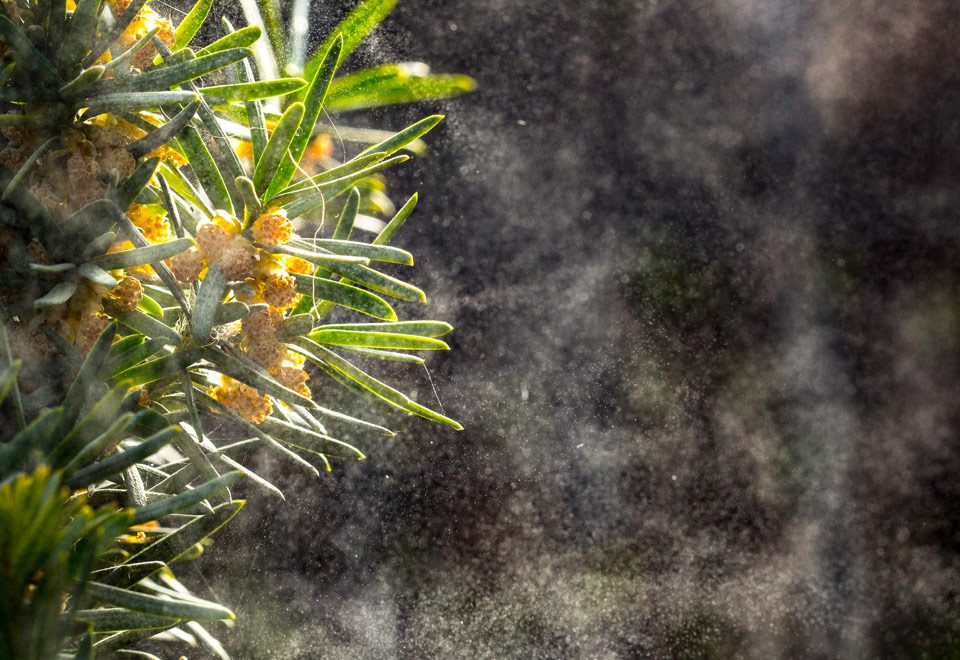Spring is just around the corner and with that comes hay fever or pollen allergies. During Spring, trees and grasses release pollen into the air which can trigger hay fever. So what exactly is hay fever and how do you manage the symptoms?
What is hay fever?
Did you know one in five Australians suffers from hay fever?
Despite the common name, allergic rhinitis is not caused by hay and does not result in fever. It is caused by the nose or eyes being in contact with environmental allergens, such as pollens, dust mite, moulds and animal dander (skin cells or fur). People who experience allergic rhinitis can be severely affected by symptoms such as a runny nose, congestion, itchy, red eyes (allergic conjunctivitis), sneezing and sometimes also cough. For some, these symptoms can be mildly inconvenient, but for others the problem can make them feel miserable and may even contribute to other more serious issues like asthma.
The good news is there are things you can do to help reduce the impact of hay fever on your daily life and help minimise the symptoms. We’ve put together 5 tips to help you manage the hay fever season and find relief if you do have symptoms.
Tip 1: Understand the causes

So why hay fever is worst in Spring?
Springtime is the perfect time for plants to release their pollen when flowering. Pollens from trees and grasses are the most common trigger for people with hay fever, allergies, or asthma. Problems with pollen are usually caused by grasses, weeds, and trees which are wind-pollinated. Spring records the highest level of daily pollen level due to the changes in temperature, wind condition and humidity in the air. The combination of pollen, moist and air pressure changes can result in the bursting of pollen grains which creates smaller particles carrying the allergens. These pollen grains can travel deeper to the lungs when people inhale which may lead to serious reactions and allergies.
Tip 2: Check your local pollen forecast
Always remember to check your local pollen forecast before getting out and about. There are lots of helpful software and apps that provide this information such as BOM (Bureau of Meteorology) or Pollen Forecast. Knowing this information will help you understand what may trigger the symptoms and to take preventative measures such as staying indoors, taking medication and having reliever medication at hand.
Tip 3: Know how to treat pollen allergy

Always talk to your doctor or GP about the treatments and the best way to manage hay fever. If you experience mild symptoms, over-the-counter medication or nasal spray may help. Please seek advice from your healthcare professional before taking any medication. Your doctor or GP can also refer you to a clinical immunology specialist who can help you with allergy testing and treatment.
Tip 4: Lifestyle changes during Spring to reduce the symptoms
There are lots of things you can do during Spring to help manage hay fever. On windy days, stay indoors as much as possible and avoid going out during or after thunderstorms. Keep your doors and windows shut throughout the day to avoid pollens travelling inside. Try allergy-friendly filters on air conditioning units.
Avoid smoking or using perfumes may also help stop the triggers to hay fever.
If you go out, wearing hats and sunglasses when outside can limit pollen landing on your eyes or hair. Change and wash your clothes when you come back home. Wash your hands or take a shower if needed after being outdoors. Rinsing your eyes regularly with water may also help.
Tip 5: Low allergen garden

The cause of hay fever as explained above can be from trees or grass that are wind-pollinated. This means plants that pollinate themselves via the wind, spreading their pollen grains throughout the air. Tree species that originate from the Northern Hemisphere such as ash, birch, conifers, maple, oak are the worst for hay fever. Fortunately, there are some other plants that are safe and don’t release pollen into the air but transfer it to other flowers by birds or insects. These are bird pollinated plants such as hibiscus, lavender, pansy, citrus, and some Australian native plants. If you need help in the garden, ACH Group offers help at home so you can live independently as you age.
Spring allergies or hay fever may affect your life if not well-managed. There is no cure for hay fever, but there are treatments available to help ease the symptoms. Remember to always speak with your healthcare professionals before taking any medication. With the right treatment and preventative measures, you can enjoy this beautiful weather and season.



